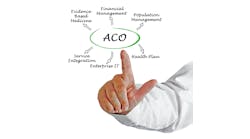Product growth and new markets are on deck for Emergis, which was acquired in January 2008 by TELUS, a C$ 9 billion Vancouver-based company with strong roots in telecom, Internet communications and wireless. The match marries Emergis' electronic health record solutions, pharmacy management systems, health benefit management and claims processing solutions with TELUS' vast network infrastructure and wireless experience.
“We plan to bring together the applications and transaction capabilities of Emergis and the infrastructure and reach of TELUS, along with our financial strength, to propel these solutions to the next level. The result is significantly increased value to the health and hospital sector; all the way down to the consumer space,” says Barry Rivelis, vice president of marketing at TELUS.
Emergis' cornerstone Unified Health Record product, Oacis, already contains vast amounts of healthcare data for more than 3 million patients in the United States, Canada and Australia. Oacis' open-architecture platform includes a “gold standard” clinical data repository (CDR), a built-in integration gateway and an enterprise master patient index. The platform is complemented with a suite of rich internet applications (RIA) specifically designed for care providers. Clinicians rapidly access and view complete patient information, streamline their workflow, document patient conditions, order services, as well as ensure that care continuity is effectively passed from one health system to another (with the patient).
With respect to the company's expertise in unified health information, Emergis' December 2007 partnership with Streamline Health Solutions, Cincinnati, added a deep set of document capture tools that can transfer hand-written and form-based documents into digitized images and incorporate them within the logical flow of the Oacis electronic record.
Two of the key U.S. installations of the Oacis Unified Health Record are the University of Texas Southwestern and The Medical University of South Carolina; the latter has been a customer since 1994, and was an original Oacis development site.
Much interest surrounds Emergis' newest addition to its product suite, the Oacis Health Data Warehouse, launched last year. Designed as a healthcare-specific data optimizer and a sophisticated analytics engine rolled into one, it provides performance measurements and decision-making tools for health-related information, as well as valuable data-mining features for clinical trials, research projects and population health management.
“This product is a significant breakthrough because there are very few health-specific analytics solutions on the market today that seamlessly combine clinical, performance, and financial data into one common optimized information mine,” Rivelis says.
To date, the largest installation of the Oacis Health Data Warehouse encompasses the entire South Australia Department of Health, where it holds more than 2 billion clinical information records across fifteen healthcare sites and associated clinics. The system is used to monitor the current status of the state's clinical and management operations, as well as to track quality assurance, public health issues, infection rates and treatment protocols, and clinical research. McGill University Medical Centre in Montreal has been using the analytics platform in their cardiac research facility and the Medical University of South Carolina began their installation in March of this year.
“As electronic health record deployments mature and healthcare becomes more mobile and interconnected, the care chain will need unified systems to house both medical records and financial data from disparate sources, and to be able to analyze the data for valuable outcomes trends necessary for healthcare's constantly changing business challenges,” Rivelis notes. “Warehousing and analytics programs across wide-ranging populations will become a key factor in improving health on a broad scale,” he says. “This data will be used to drive performance measurements, but also will inspire a whole new set of preventative health programs.”
“As patients continue to adopt a greater role in their own healthcare, we'll see the emergence of wellness programs that are sponsored by best-in-class employers,” he adds. “We will also see the emergence of a number of patient portals, in particular for remote patient monitoring.”
Up one rank from last year, HIT revenue of $149.6 million in FY07 earned Emergis the #33 spot on this year's Healthcare Informatics Top 100. “Our core business drivers are data, wireless and Internet transactions,” Rivelis says. “If you look at where healthcare is going, the needs for information at the point of care and the ability to make better and faster decisions are going to dominate this sector for the next number of years.”
Healthcare Informatics 2008 August;25(8):48
